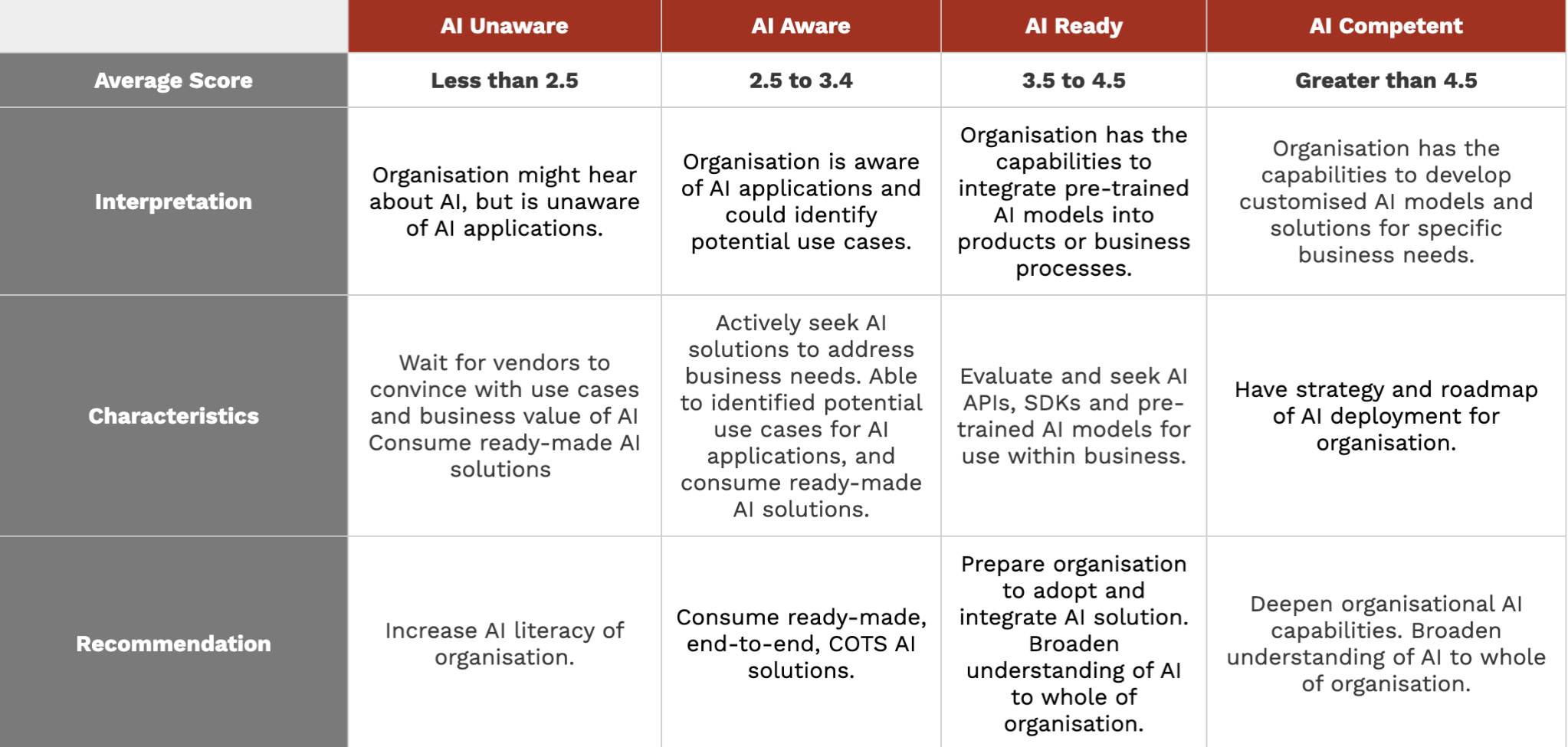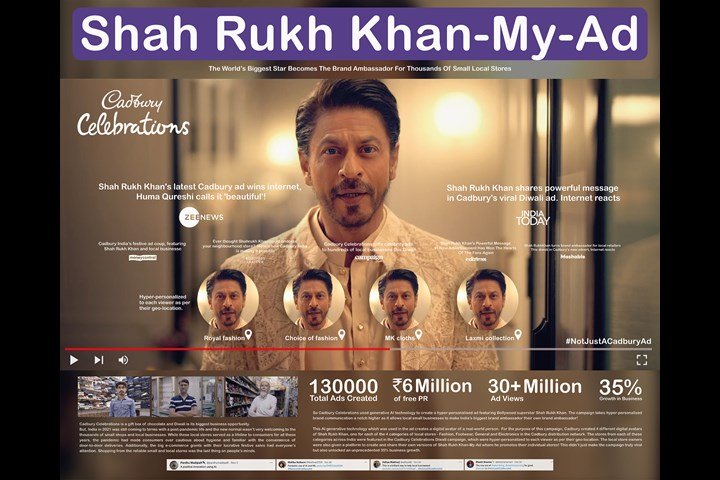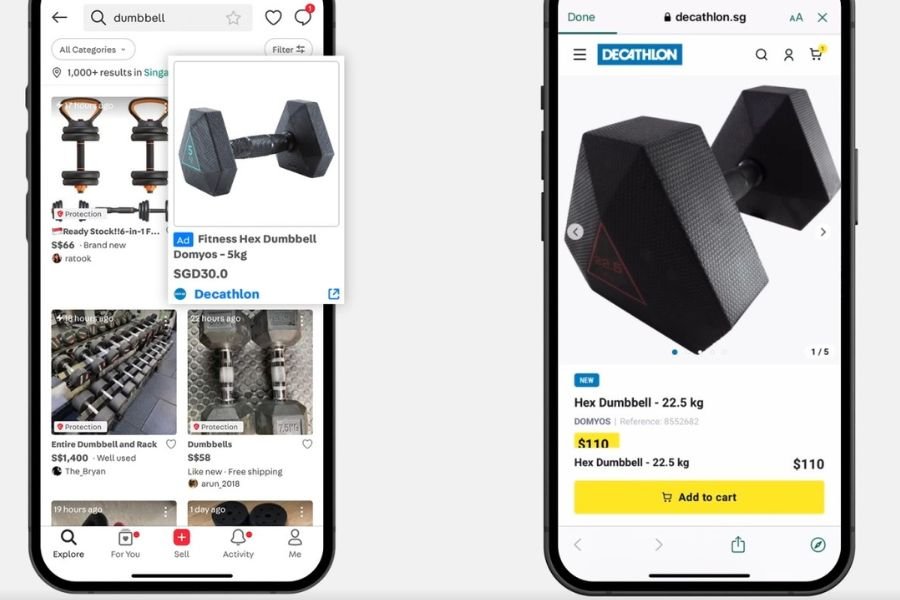Part 1: How AI is Revolutionising Advertising in Asia; Innovation in AdTech

Authors: Darryl Choo, SCMP, Valentina Lizzi, InMobi, Cynthia Lam, Google and Alvin Liong, IlmuOne Data,
Contributors: Pedro Ramirez, Mindshare, Shabana Badami, Google, Ibrahim Merican, Magnite, Caroline Lim, AppLovin
Introduction
Author: Alvin Liong, IlmuOne Data
The burgeoning Artificial Intelligence (AI) revolution is not just a source of excitement but a catalyst for innovation, increasingly becoming integral to everyday business operations in Southeast Asia and India. For marketers, AI’s applications are extensive and transformative, ranging from enhancing creative executions to sophisticated analysis of large data sets, all significantly boosting return on investment (ROI).
This article marks the first part of a two-part feature from the IAB SEA+India Regional AdTech and Innovation group. In this installment, we delve into how AI is revolutionising aspects of advertising. These include creative development, media strategy, and data analytics, highlighting AI’s pivotal role in enhancing marketing efficacy.
The integration of AI spans various functions within marketing teams, offering numerous avenues for application. These include experimenting with Generative AI to tailor creative content, utilising AI-driven advertising solutions for real-time processing of massive data volumes to determine optimal bidding strategies, and developing custom AI models and machine learning (ML) scripts to better measure growing data points.
Beyond its role in creative and strategic tasks, AI’s influence extends to operational improvements. It enhances productivity, enables cost savings, and optimises the allocation of resources, ultimately leading to improved business outcomes. This AI-driven transformation is reshaping the landscape of digital advertising in Southeast Asia and India, presenting marketers with a powerful set of tools to navigate and succeed in these vibrant, ever-changing markets.
Organisational readiness
So how many companies are actively ready to engage AI in one department let alone across an entire organisation? The AI Singapore’s AI Readiness Index (AIRI) which it uses to help businesses assess their AI Readiness and identify the gap between their current and desired organisational goals.
Marketers tend to be early adopters of the latest technologies so it is important for them to evangelise the adoption of AI from marketing to other departments and decision makers.
important for them to evangelise the adoption of AI from marketing to other departments and decision makers.
“AIRI provides the participant with an understanding of their organisation’s AI Readiness, and with this knowledge, appropriate intervention can then be planned and taken to accelerate their AI transformation.” Laurence LIEW, Director, AI Innovation, AI Singapore.
The fundamentals of marketing remain unchanged, but what is new is that AI can help supercharge our creativity and effectiveness at a scale and pace never before seen.
Source: AI Singapore
AI, the Great Marketing Democratiser
Authors: Darryl Choo, SCMP, Valentina Lizzi, InMobi and Cynthia Lam, Google
AI unlocks novel storytelling possibilities, propelling creativity into uncharted territories. As this technology becomes more accessible to SMBs and Midmarket Segments, it transcends data analysis, transforming data into a vital tool for creative collaboration. While AI fuels an increase in content, ranging from valuable nuggets to spam, audiences and marketers will seek sources that provide genuine value.
As marketers and creative teams integrate AI more deeply into the creative process, they can deliver more engaging ad experiences and captivate audiences with more innovative out-of-the-box creative work.
Democratising Innovation
The Shah Rukh Khan My ad campaign by Cadbury India is a multi-award-winning example by IAB SEA+India Member, Wavemaker Global and Ogilvy. Cadbury India teamed up with Bollywood icon, Shah Rukh Khan, enabling small businesses to personalise a standardised ad with their brand name in a customised video.

This initiative ushered in a new era of democratised innovation, empowering individuals and small businesses with limited resources to compete with industry giants and create content efficiently, making creativity accessible to all.
In another campaign for Cadbury, AI enabled the seamless transition from long-form to short-form content in the form of a bespoke birthday song. This clever campaign gave people the ability to bypass the traditional Happy Birthday song and to send original happy birthday songs to friends and family. The result is meaningful audience engagement at a deeply personal level and ongoing resonance with consumers as recipients perpetuate the Cadbury campaign.
long-form to short-form content in the form of a bespoke birthday song. This clever campaign gave people the ability to bypass the traditional Happy Birthday song and to send original happy birthday songs to friends and family. The result is meaningful audience engagement at a deeply personal level and ongoing resonance with consumers as recipients perpetuate the Cadbury campaign.
In today’s advertising landscape, cutting-edge tools like AI and augmented reality (AR) are revolutionising the content production process. These technologies offer multiple angles of enhancement including reducing turnaround time, accelerating project completion, and opening up new possibilities for creativity by introducing interactive and immersive experiences that amplify the effectiveness of advertising campaigns. Moreover, by democratising creative formats, AI and AR are accessible and cost-effective for businesses of all sizes.
APAC marketers leading AI adoption
In a report released this year by LinkedIn, the advancement of generative AI is moving at an accelerated pace. B2B marketers in APAC are increasingly prioritising bolder and more innovative campaigns, with 52% of businesses already leveraging AI in their operations compared with 45% globally. This number is poised to soar as AI continues its exponential growth.
is moving at an accelerated pace. B2B marketers in APAC are increasingly prioritising bolder and more innovative campaigns, with 52% of businesses already leveraging AI in their operations compared with 45% globally. This number is poised to soar as AI continues its exponential growth.
AI is seamlessly integrating into the creative work landscape. Meta has recently announced that it will be bundling its generative AI tools to enable advertisers to create content like background images and ad copy variations in Meta’s Ad Manager. The rollout is expected to be completed by 2024 and has already been tested by a select group of advertisers in a “testing playground”.
AI’s integration into the creative process marks a transformative milestone in the intersection of technology and creativity. Marketers tend to think of change as disruptive because it catalyses change in organisations, but in reality it’s iterative.
AI is not replacing human creativity but rather augmenting it; AI holds the promise of making the creative process more accessible to everyone, democratising the art of storytelling and content creation; AI, like all technology, is an enabler, not a replacement, empowering marketers to focus more on what only we can do: creating human connections.
Unleashing Personalised Privacy-First Media with AI
One of the benefits to running digital advertising campaigns is the ability to granularly target audiences. However, the complexity of privacy laws and Big Tech policies have made this quite a challenge. Aside from the well publicised depreciation of cookies issue and iOS 14 App Tracking Transparency policy, there are also country-specific consent requirements which would be difficult to navigate and execute in a geographically united yet regulatorily diverse market such as Southeast Asia and India.
Then there’s added to this cross-device user journeys, diversified consumer media options spanning the gamut from local players to global entrants, and the increasing multitude of personalised creatives. All of this can make it seem an insurmountable task to analyse these complex user journeys and data sets, in a privacy-safe manner, to plan and buy media.
Because of this, gaps in the user journey appear, conversions/interactions can be unclear and attribution paths may become unobservable. However, these are precisely the conditions ripe for AI to shine. Google employs ML to quantify the impact of your marketing campaigns in conversion modelling. They have introduced this as a solution to fill the gaps in campaign measurement and is used in their ad platforms such as Google Ads and Google Marketing Platform.
Isuzu Thailand was able to drive a 67% increase in valuable leads while improving ROI by reducing the cost per qualified lead by 49%. After this success, there was no longer a discussion of whether they should use AI ad solutions, but rather a question of when and how quickly they could use it to boost their business results.
For the programmatic practitioners who juggle various platforms and tools each with their own targeting nuances and data matching challenges, AI can make a similar impact on how they target and trade. In order to improve work flows and reduce time-consuming duplication of tasks for programmatic traders, Quantcast, released Aro, their AI and ML engine, on their platform.
Aro looks through large chunks of data and organises it into a contextual map. This simplifies how custom audiences can be created without having to work across multiple platforms/providers to achieve the same result. In this way, planning and targeting audiences on their platform is future proof as it doesn’t rely on cookies.
AI and existing media channels
AI is critical to the infrastructure and performance for many ad products on many platforms.
TikTok has launched its own AI in a chatbot tool called Tako, a chat assistant that allows users to search for entertaining and inspiring content on the app. Testing is currently being done in the Philippines with selected users.
that allows users to search for entertaining and inspiring content on the app. Testing is currently being done in the Philippines with selected users.
This is an addition to the platform’s algorithm for suggesting videos to users on their For You page. Combined with AI, the suggestions can become even more accurate over time, improving the experience for its user base, and could become an influential video search engine for internet users in the near future.
It will help advertisers and brands create more effective ads by using ML algorithms to analyse data and more precisely target audiences. It enables expansion of consumer reach across more platforms; and uses thousands of demographic and behavioural data points for accurate targeting. Consumers will receive more personalised and relevant advertisements enhancing user interaction, engagement and sales potential.
Uniting Measurement with AI
Accurately measuring the effectiveness of a particular ad campaign is essential in ensuring that resources are being spent in the most effective way. As ad campaigns become increasingly complex and technology becomes more sophisticated, the need for advanced measurement which can keep pace with the developments in creative and media has become equally important.
Many marketers face exactly this challenge when they decide to personalise their creatives with local language ad copy. Creative ads already have many elements being developed, scrutinised then not approved for a myriad of reasons. Even adding one additional language variant presents challenges across the creative production, media buying and planning and analytics measurement fronts.
TMRW Indonesia – the digital banking arm of United Overseas Bank (UOB), a leading financial institution in Asia – was only the start of their AI Measurement journey. In addition to a first of its kind banking app featuring AI driven personalised features, the marketing team also developed local language ad copy to continue to develop more personalised creative elements for testing, analysis and iteration soon took hold.

The challenge lay in incorporating all the creative variants’ data points with all the media channels’ performance data points, and reconciling it in real-time with client side data and then disseminating actionable insights in real-time to their creative agency, media agency and analytics consultancy. The solution to address this added complexity was to build a custom computer vision script and deploy it in the cloud to stream real-time results to all stakeholders simultaneously.
Their custom data science and ML solution slashed the time spent for creative measurement by 95%. Teams can now focus on learning and acting on the insights faster, as opposed to cleaning and processing disparate data sets.
AI algorithms need to be regularly updated to keep up with the changing ad landscape. This means that they need to be constantly trained on the latest datasets to ensure accuracy. In a privacy-first world, some of the best data sets would be first-party data for which users have provided consent via opt-in, data from platform APIs such as Apple’s SKAdNetwork, Google Chrome’s Privacy Sandbox Attribution API or data sets for which observable signals provide reliable and accurate conversion tracking.
landscape. This means that they need to be constantly trained on the latest datasets to ensure accuracy. In a privacy-first world, some of the best data sets would be first-party data for which users have provided consent via opt-in, data from platform APIs such as Apple’s SKAdNetwork, Google Chrome’s Privacy Sandbox Attribution API or data sets for which observable signals provide reliable and accurate conversion tracking.
In Southeast Asia, there are several examples of pioneering efforts to lay the groundwork for providing these datasets to improve and enhance measurement, thereby updating AI algorithms. Carousell Shopping Ads has a closed-loop measurement from Carousell’s marketplaces back to the brand’s website. In addition, the platforms provide brands with the keywords behind each click, giving them consumer intent data that can help guide their other marketing initiatives. Most importantly, advertisers can download data via APIs or CSVs to connect data across all sources that provides a holistic understanding of consumer trends.
Conclusion
In summary, the greater integration of AI in digital advertising marks a significant shift, particularly in the culturally and technologically rich landscapes of Southeast Asia and India. This shift extends beyond the mere adoption of novel tools; it represents a fundamental change in the conceptualisation, execution, and evaluation of advertising strategies. AI’s capabilities range from empowering smaller enterprises with innovative personalised advertising campaigns, like the Shah Rukh Khan My ad campaign, to enhancing precision in audience targeting while upholding user privacy.
Further, AI’s value in refining operational efficiency and measurement precision is paramount. It underpins a more nuanced understanding and engagement with diverse consumer groups, ensuring that investments are directed towards the most effective strategies. The integration of AI across various aspects of digital advertising – from content generation to campaign analytics – underscores that this technology is an enhancer, not a replacement, of human creativity. It democratises the creative process, ensuring that advertising messages resonate more meaningfully with their audiences. Ultimately, the role of AI in advertising is not to automate creativity but to enrich and broaden the scope of human insight and connection in an increasingly digital world.
As we conclude this first part of our series, we invite you to explore the second article, which will delve into the tactical execution of AI in advertising, building upon these strategic insights with practical, real-world applications.

